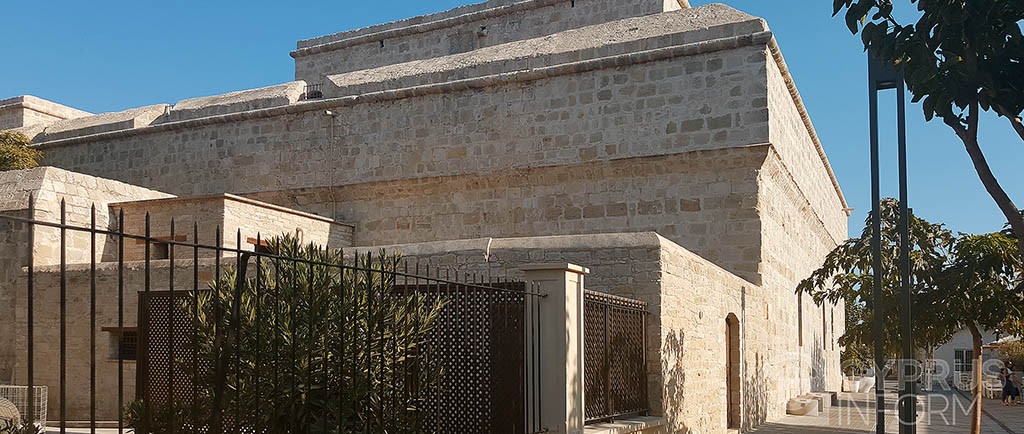Limassol Castle has survived wars and earthquakes. It was burned and rebuilt but, like the Phoenix, it was reborn from the ashes so that it could share with us the legends, secrets and stories that took place within its walls.
Limassol Castle was the main refuge for the Knights Templar; under the arch of its chapel, Richard the Lionheart married his beloved, Berengaria of Navarre; after the Lusignans ruling it was rebuilt and later used as a prison.
History of the castle
Later, during the Crusades, the castle was occupied by the Knights Templar; in fact Cyprus became their main home in the early 12th century.
In 1184 Isaac Comnenus declared himself the Emperor of Cyprus, and ruled the island until 1191 when Richard the Lionheart left the romantic legend in the chronicles of Limassol Castle…
“On May 6, 1191, on the feast of St. John, King Richard and his entire fleet was shipwrecked on his way to the Holy Land (the Kingdom of Jerusalem). One of the surviving ships beached near Limassol. There were the king’s sister, Joanna Sicilian, and the bride of Richard, Berengaria of Navarre. Isaac Comnenus kept them imprisoned and demanded a ransom. In response, Richard stormed the city, and within a week Isaac Comnenus was forced to flee. On May, 12th the lovers were married in a beautiful chapel in Limassol Castle”.
Soon the King sold Cyprus to a Lusignan noble family, who founded the royal dynasty that ruled Cyprus for about 300 years. This period has left an imprint in the interior of the castle: the symbol of Lusignan, the lily, can be found on the walls of the fortress today.
The castle survived the siege of the Genoese and the fire in 1373, the attack of the Egyptian Mamluks (1425g.), and an earthquake in 1489. During the reign of the Ottoman Empire (16th century), its walls were strengthened (up to 2 meters in thickness), and the fortress was used as a prison. In the late 19th century, the British continued this tradition.
During its long, eventful life, the medieval castle of Limassol was a mute witness to secret court intrigues, conquests and attacks. Now it is the Museum of the Middle Ages.
How is the castle used today?
25 years later, tombstones of Crusaders and the monks from Hagia Sophia were transferred here as it was caught in the buffer zone (Nicosia). They are located on the ground floor of the castle.
The second floor of the museum attracts visitors with its detailed collection of weapons, jewellery, and medieval household items.
Among the exhibits on display:
- Knight’s armour;
- a collection of medieval weapons (guns, swords);
- exhibits of glass and bronze;
- ancient coins;
- ceramic tableware and ornaments;
- metal jewellery and valuables.
In the museum it’s easy to trace the evolution of culture, crafts and the way of life, starting with the Byzantine / early Christian era (3rd century), and ending with the period of Turkish rule (18th century). The gloomy solemnity of the castle’ ancient buildings highlights the uniqueness of each historical period.
Interesting Facts
- The centre of the Knights Templar in the 12th century was not located in France, as is commonly believed, but in Cyprus, namely Limassol Castle. Unlike the French, Cypriot knights enjoyed respect and the sympathy of local people.
- The roof of the castle offers a beautiful view of the city Cyprus, the Orthodox churches and mosques. Be sure to climb to the observation deck, – breathtaking panoramic views of Limassol and the sea is very impressive indeed!
- Visiting Limassol Castle, you will want to go back to the early days of the Middle Ages, for sure. In Cyprus nothing is impossible! “Portal in the Middle Ages” is located in an exciting amusement park Cyprus land!
You can try on real armour, fight in the tournament with swords, or hit the target with the bow and arrow, and see medieval Cyprus from a bird’s-eye view!
How to get to the castle?
For those who travel by car, finding the castle is easy too. It is in the romantic Richard and Berengaria Street. Leave your car in the Old Port car park, or on one of the streets of the old city.
For those who are travelling from Larnaca or Paphos, we recommend you keep on the road leading to the sea, just after entering Limassol. Going down through the city, you will reach the Old Port.
Opening hours of the museum
- Monday-Friday from 8:00 to 17:00;
- Saturday from 9:00 to 17:00;
- Sunday from 10:00 to 13:00;
- closed on public holidays.
Ticket price – €4.50
- 4,50 eurо;
- for groups of 10 people — 20%.
For more information call: + 375 25305419.
